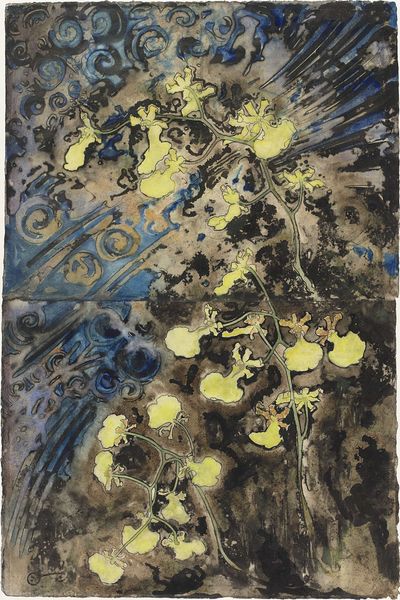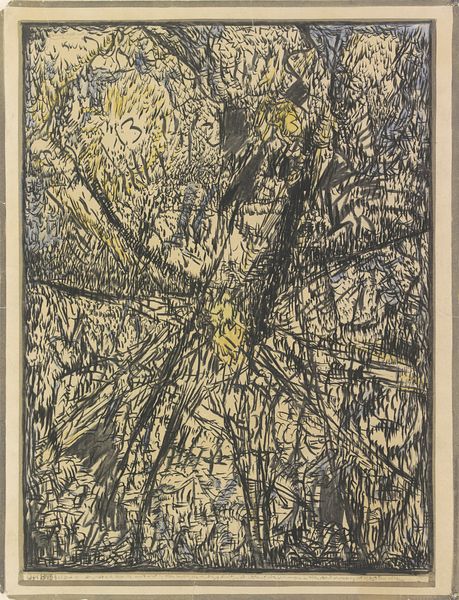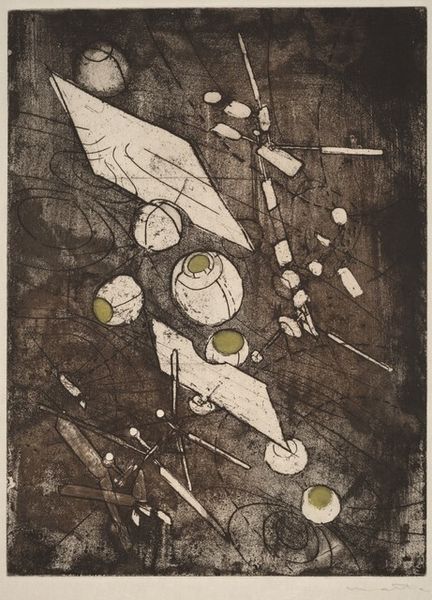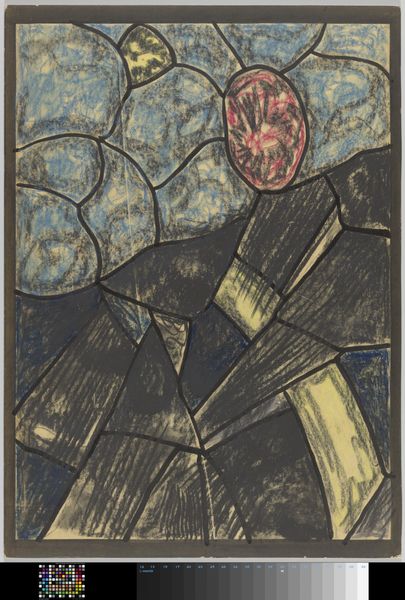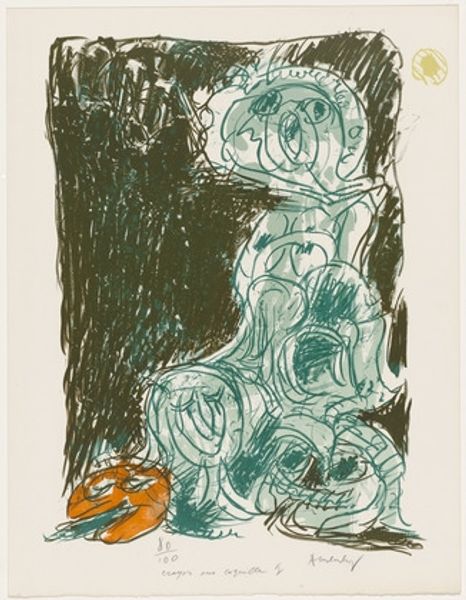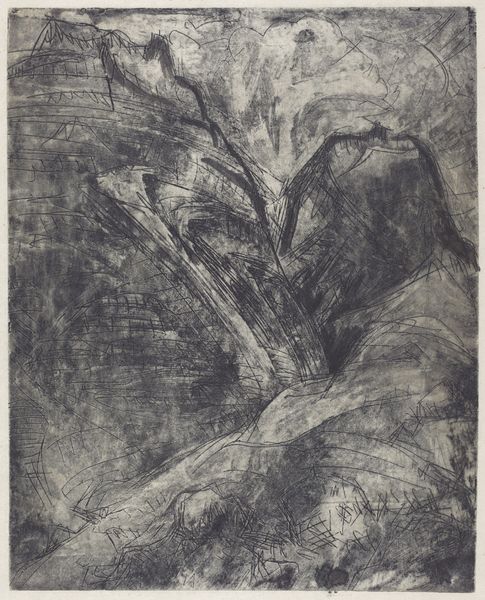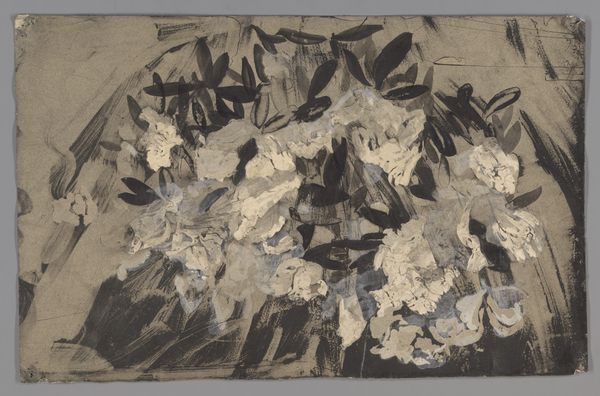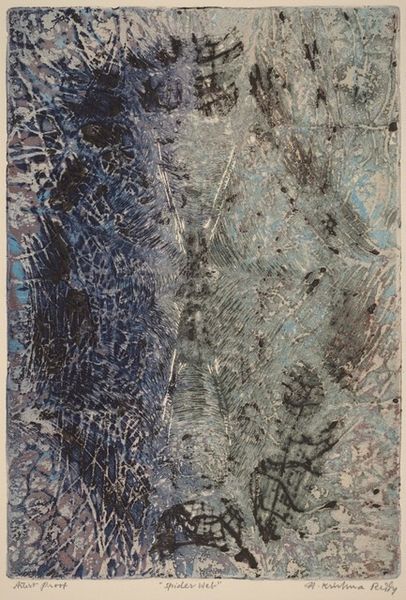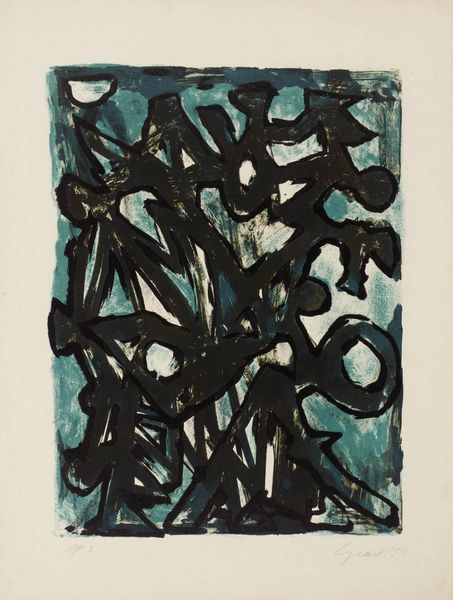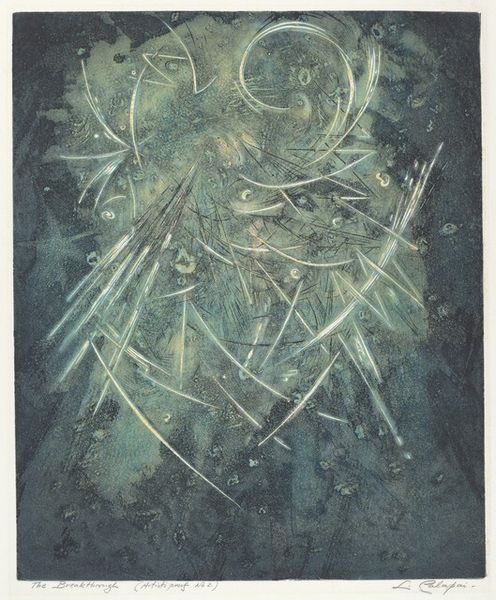
Dimensions: height 496 mm, width 323 mm
Copyright: Rijks Museum: Open Domain
Editor: So, this is "Tak met witte bloemen", or "Branch with White Flowers," and it’s a pencil, watercolor, and colored pencil drawing done by Wilhelmus Johannes Steenhoff sometime between 1873 and 1932. The overall tone feels quite somber to me, with that stark contrast. What do you see when you look at it? Curator: Well, beyond its aesthetic qualities, which you rightly noted, I'm interested in its institutional history. Steenhoff worked at the Rijksmuseum; how did his access to its collection shape his own artistic practice and what was the culture like? Was the image designed for study or sale, influencing public taste? Editor: That's a side I hadn't considered, his being connected to the museum. It must have impacted his art. Does that context change the way you view the floral subject matter itself? Curator: Absolutely. During his era, the role of museums was evolving, with a greater emphasis on education and national identity. Images of flora also carried a nationalistic message. Think about the social history of the flowers themselves – who would have cultivated them, where might they have been sold or displayed, what societal roles did flowers have? How might these roles impact the image? Editor: I suppose focusing only on the pure artistry kind of misses that larger historical influence on Steenhoff’s work. So much for 'art for art's sake.' Curator: Precisely. We can’t isolate a work of art from the institutions, the power structures, that influenced both its creation and how it was received, right down to what flowers represented. Editor: I guess it forces you to consider more than just the surface. I'll definitely look at art differently now! Curator: That’s the goal, isn't it? To engage with art as a product of its time and to understand the politics of looking.
Comments
No comments
Be the first to comment and join the conversation on the ultimate creative platform.
